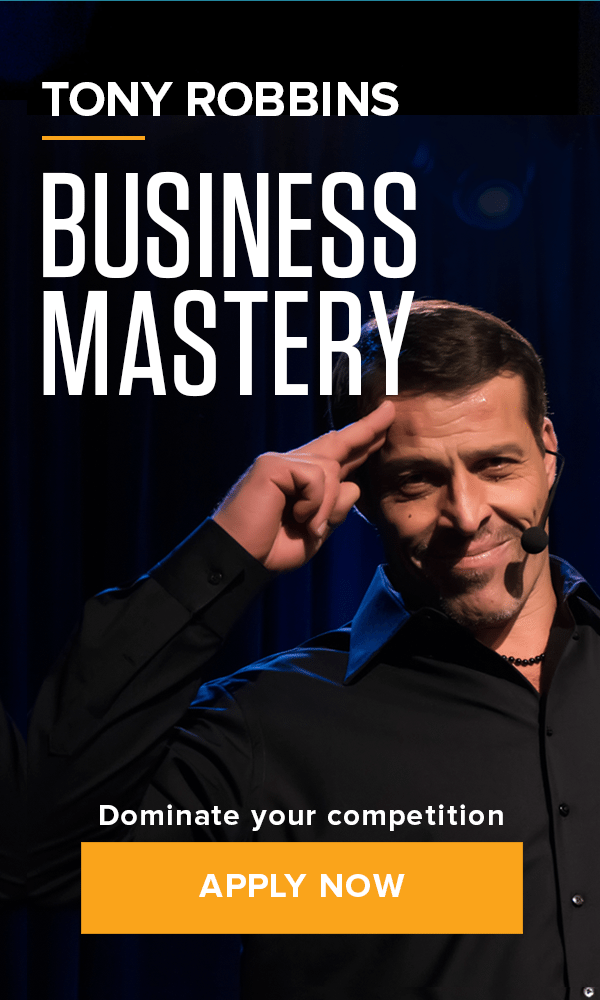Team Tony cultivates, curates and shares Tony Robbins’ stories and core principles, to help others achieve an extraordinary life.
Commit to actions, not beliefs
What to do when getting the entire team “on board” seems impossible
One of the patterns in work – and life – is the rhythm of thinking and doing, contemplation and action. Teams and companies that adaptively shift between these two operating modes accelerate learning with the result of being more resilient, agile and enduring. For leaders, this means lowering the barriers that tend to keep teams stuck in doing mode or thinking mode.
The notion that we need “everyone on board” before committing to action in the workplace is a barrier for teams wanting to shift from ‘discussion’ to ‘doing.’ This practice is linked to framing ‘doing’ in terms of prove and perform. Instead, if we frame ‘doing’ in terms of improve and learn, we free people to hold on to their reservations and make it easier to commit to trying something new.
Commit to Actions, Not Beliefs
When we make commitments or look for team members to make commitments, one mistake is to try to get people “on board” – in other words, trying to get people not only to align their actions and behaviors, but also to make a mindset change. The better way is to simply commit actions. For any significant decision, you are likely to have people who would have chosen a different path. What the organization needs is for the entire organization to align behind the actions needed to support the decision. Trying to convince people that they need to align their mindsets too adds a burden that delays moving forward and requires them to admit “they were wrong.” Since the action happens immediately after the decision was made, we do not know who was wrong, if anyone.
Imagine you have to make a decision on a proposal that one of your employees submitted. Your colleague has stated that they intend to change an advertising campaign in a certain way. The moment you hear about the proposal, you experience a negative reaction. Your personal experience is that this is a bad idea. You believe you will lose sales or waste resources. It is not an ethical issue and no one will get hurt, but it’s just not the best thing for the organization. Still, since this will play out in the future, like all decisions, you are not 100% sure.
The commitment you can make, as a leader, is to support the decision with your actions and see what happens. You do not have to believe it is a good idea, only that there’s enough of a chance that it is a good idea to risk what limited resources will be spent on it. You are also weighing the learning impact for this colleague and the organization. This is good enough for the company.
The same principle holds true if the situation is flipped. If you have asked your team to execute a particular decision, and there are people on the team who don’t believe it is the best way to go, you do not have to convince them that it is. You should let them hold on to their ideas. As long as they commit to supporting the decision through actions, the goals of the organization are met.
Once the decision is made, don’t try to convince dissenters and outliers that their thinking is wrong. No one can know if the decision is correct until you test the hypothesis on which you based the decision.
Ella’s Kitchen: A collaborative culture
Ella’s Kitchen is an organic baby-food company outside of London. The leaders have worked to build a more collaborative culture where people contribute their ideas. One of the ideas from the product team was for a breadstick-like food called melty sticks that children as young as seven months could manage. Technically, it was a tough product to make – make it too hard and it would be scary and sharp, make it too soft and it would melt into nothing too fast. Additionally, it required special packaging. This drove up the costs of packaging and shipping the product.
For that reason, leadership did not think this was a viable product. But the leaders had made a commitment to build this more participatory culture, so they reasoned that they needed to fulfill their side of the deal and let the team try their ideas. Viewing it as a learning opportunity, leadership approved production.
A year later, melty sticks had become the company’s number-one grossing product.
This article is adapted from Leadership is Language: The Hidden Power of What You Say – and What You Don’t by L. David Marquet, with permission of Portfolio, an imprint of Penguin Publishing Group, a division of Penguin Random House LLC. Copyright © L. David Marquet, 2020.
ABOUT DAVID MARQUET
David Marquet, a top graduate of the U.S. Naval Academy, commanded the nuclear-powered, fast-attack submarine USS Santa Fe from 1999 to 2001. Since retiring from the Navy he has worked with businesses nationwide as a leadership consultant. He gives presentations around the world about his acclaimed first book, Turn the Ship Around: A True Story of Turning Leaders Into Followers.




